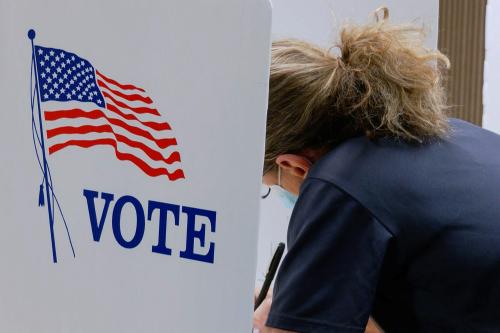“A democratic State is most parsimonious towards its principal agents” – Alexis de Tocqueville, Democracy in America.
A crucial duty of every new president is to recruit good candidates to serve in senior administration positions. For better or worse, the experience and talents of the president’s top appointees will help determine the administration’s success in setting and executing policy. The president’s ability to recruit talented citizens depends on the attractions of top government jobs, including the salaries and non-wage compensation offered to those who serve in these positions. Strong candidates seldom accept senior administration posts solely, or even mainly, out of pecuniary considerations, but many people will be deterred from public service if a large financial sacrifice is required in order to serve.
This report examines the salaries and non-wage compensation offered to presidential appointees and considers whether they are generous enough to attract the best candidates. The report also compares compensation packages for executive branch officials with those offered to their counterparts in the private sector, and it looks at how today’s federal compensation packages compare with those offered in the past.
Congress is ultimately responsible for establishing pay levels for senior appointees in the federal government. This obligation makes Congress vulnerable to the charge of cynical self-interest. The problem stems from the practice of linking salaries of executive branch officials to those of members of Congress. This means that legislators who vote in favor of a pay hike for federal executives are widely seen as voting for an improvement in their own remuneration. Constituent pressure often forces Congress to hold a “yes” or “no” vote on scheduled pay raises, even when a law has been carefully crafted to allow salary increases to take place without any explicit action by members of Congress.
Congressional reluctance to vote in favor of pay hikes has meant that the salaries of senior federal executives have followed an erratic course over the past century. Measured either in terms of purchasing power or as a ratio of the average wage of private-sector workers, the annual pay of Cabinet officers and sub-Cabinet officials has fluctuated widely and trended downward over the past few decades. Federal compensation of top officials is determined by the logic of politics rather than dispassionate analysis of supply and demand. Even though the federal pay structure is not calibrated to achieve rational economic objectives, however, the level of top officials’ pay must have an impact on the recruitment, performance, and morale of senior administration officials.
This report documents the course of highlevel federal compensation over the past several decades, describes the process used to set top officials’ salaries, and shows how and why salary levels have varied over time. A variety of benchmarks can be used to assess the adequacy of federal executive pay. One standard is the purchasing power of salaries. What standard of living can be achieved by an office-holder, assuming her household income while in office consists solely of her federal pay check? Of greater relevance are the wages of other workers, especially those who hold private-sector jobs with similar skill requirements and responsibilities. How does federal executive pay stack up against the salaries paid in similar positions outside the federal government?



